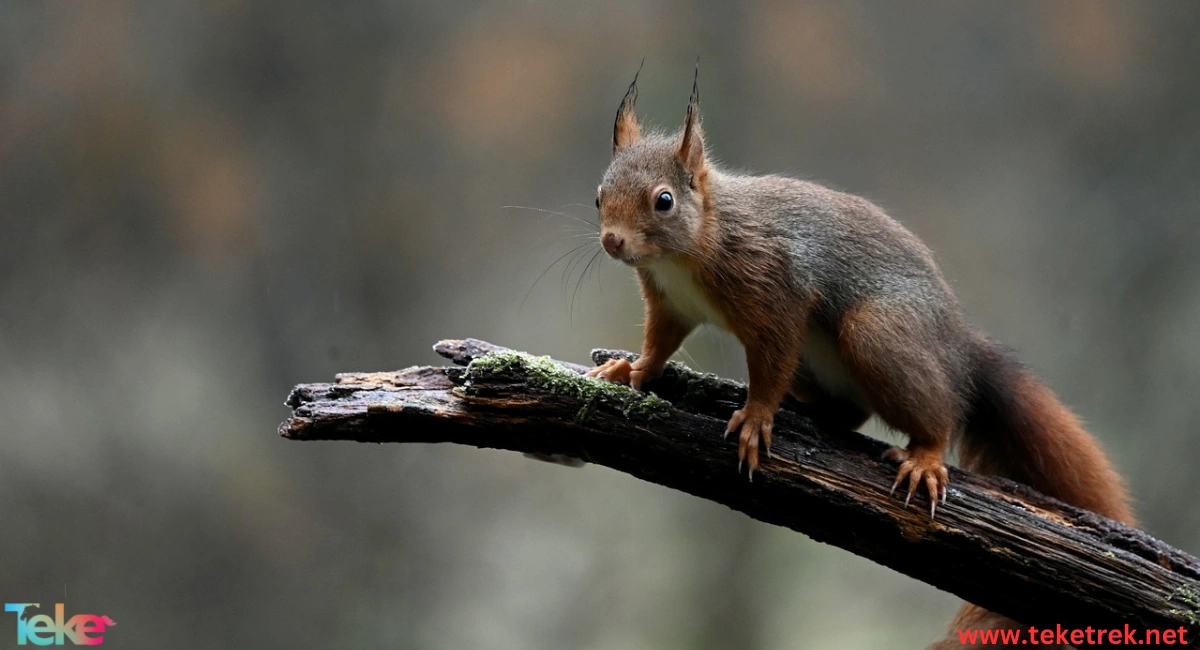· It is a unique animal known for its ability to glide through the air, it belongs to the class Mammalia, order Rodentia, and family Sciuridae.Despite its name, the flying squirrel does not fly in the same way as bats do; instead, it glides through the air by extending a flap of skin between its limbs and body.
Let’s learn more about it from teketrek.

The Flying Squirrel specifications:
Appearance and color:
The flying squirrel has a distinctive appearance with a brown fur coat on its back and white fur on its belly.
Length, Weighs:
It measures between 9 to 14 inches in length and weighs around 14 ounces.
Eyes:
The flying squirrel has large eyes that aid in night vision for hunting.
Whiskers:
It also possesses whiskers and long whisker-like hairs that help it avoid collisions while hunting at night.
Age:
Flying squirrels live up to 5 or 6 years in the wild.
What do The Flying Squirrels eat?
· Flying squirrels have diverse diets that include nuts, seeds, insects, fruits, flowers, nectar, and fungi.
· The flying squirrel stores food in tree hollows and starts using it in the winter.
Flying squirrel species
There are more than 50 species of flying squirrels, the most important of which are:
Giant flying squirrel:
It lives in India and Southeast Asia. It weighs from 1 to 2.5 kg, its body length is about 30 to 60 cm, and its tail is from 35 to 64 cm.
Dwarf flying squirrel (pteromys momonya):
They live in the Malay Peninsula in Asia, and their bodies are 7 to 9 cm long, and their tails are 6 to 10 cm long. They are very small squirrels in size.
Where are flying squirrels found?
· Flying squirrels can be found in the United States, California, and New York. They also migrate from Southeast Asia to Siberia to serve Scandinavia.
· Flying squirrels prefer habitats with diverse forests and coniferous trees that have holes where they can nest.
Reproduction stages of flying squirrels:
· The mating cycle of flying squirrels varies by species, with some having only one mating cycle while others have two. During the mating season, the male pursues the female and they mate twice, once from January to April and then from June to August. The gestation period lasts for about 40 days, after which the female gives birth to around 6 offspring. The newborns are born without fur, with closed eyes and ears, making them dependent on the mother for care until they can find food on their own.
· At 25 days old, their eyes open, and the young stay with the mother in the nest for up to four months before they can fend for themselves and live in the wild.
Facts about the Flying Squirrel:
·The flying squirrel’s scientific name is Pteromyini.
· It faces threats from predators such as snakes, owls, hawks, martens, and raccoons, including domestic cats.
· It has a patagium, a specialized membrane that allows it to glide and maneuver between branches.
· The flying squirrel uses its mouth to shred food items.
· Flying squirrels can feign death when threatened.
· They are active during dusk in early autumn to search for food.
· Flying squirrels communicate with short, high-pitched chirps when interacting with others.
· They can cover distances up to 65 feet despite not being able to fly.

FAQs about the Flying Squirrel:
1.How do flying squirrels fly?
Flying squirrels do not fly but glide effortlessly by using their limbs and body movements to steer and propel themselves when airborne.
2. When are flying squirrels most active?
Flying squirrels are most active during dusk in early autumn when they search for food.
3. What sounds do The Flying Squirrels make and what do they signify?
intensity based on their playful mood or basic communication needs.
4. What is the range of flight for flying squirrels?
Although they do not fly, flying squirrels can cover significant distances up to 65 feet.
5. How long does a squirrel live?
Impacting wildlife within the wild until they reach the age of 5 or 6 years.
In conclusion, the flying squirrel is not just an amazing creature but also a symbol of adaptability and resilience in the natural world. Preserving their habitat and resources is crucial for their future. Understanding our tools for wildlife conservation, including the flying squirrel, reflects our commitment to biodiversity.





